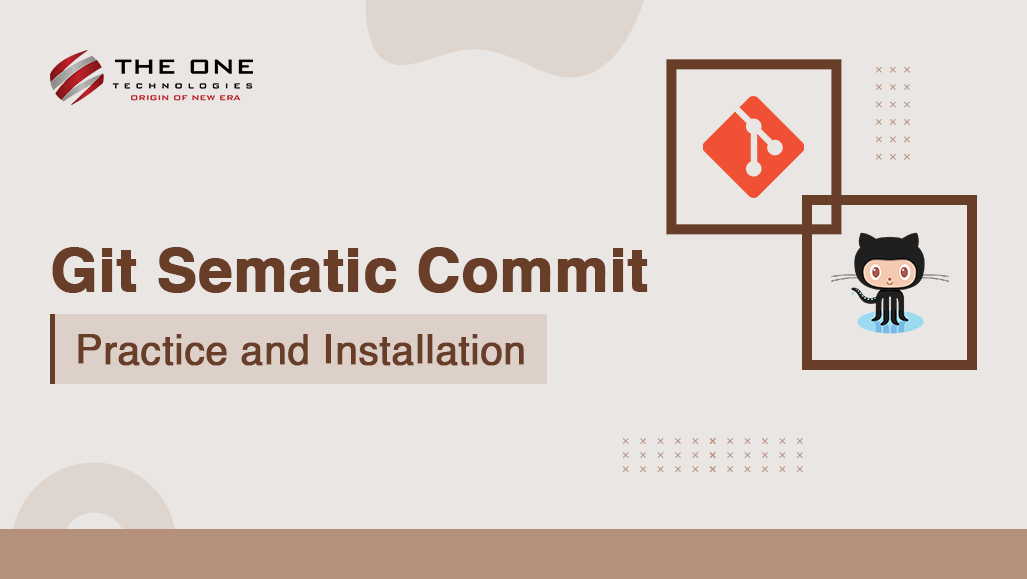Git Sematic Commit Practice and Installation

Git commit messages are difficult for maintaining a clean and understandable project history. However, crafting meaningful and consistent commit messages can be challenging. This is where semantic Git commit messages come in handy. A structured format for commit messages that you can ensure clarity and consistency across your project. Let's explore what semantic Git commit messages are, how to set them up, and how to use them effectively.
Table of Content
- What is Semantic Git Commit Messages?
- Installation
- Usage
- Uninstallation
- How to Contribute
- Conclusion
- Frequently Asked Questions
What is Semantic Git Commit Messages?
Semantic Git commit messages are a way to standardize your commit messages using simple, predefined commands. These commands help you categorize your commits, making it easier to understand for human. For example, instead of a generic message like "updated code," you would use a more descriptive message like "feat: add new login feature."
Installation
To start using semantic Git commit messages, you need to install a set of custom Git commands. Follow these steps:
Clone the Repository
Clone the repository containing the semantic commit scripts to your home directory:
git clone https://github.com/A3939/git-semantics-commits ~/.git-semantic-commits Install the Scripts
You can install these as bash scripts or Git aliases.
- Bash Scripts:
cd ~/.git-semantic-commits && ./install.sh --scripts - Git Aliases:
cd ~/.git-semantic-commits && ./install.sh Note: The installation script is idempotent, meaning it can be run multiple times without causing issues. It modifies your ~/.bashrc or ~/.zshrc files to add bash scripts to the PATH or updates your ~/.gitconfig file to add Git aliases without duplication.
Usage
After installation, you'll have access to eight new Git commands that map to specific commit types:
- git feat "commit message here" -> git commit -m 'feat: commit message here'
- git docs "commit message here" -> git commit -m 'docs: commit message here'
- git chore "commit message here" -> git commit -m 'chore: commit message here'
- git fix "commit message here" -> git commit -m 'fix: commit message here'
- git refactor "commit message here" -> git commit -m 'refactor: commit message here'
- git style "commit message here" -> git commit -m 'style: commit message here'
- git test "commit message here" -> git commit -m 'test: commit message here'
- git localize "commit message here" -> git commit -m 'localize: commit message here'
Adding Optional Scopes
If you want to add an optional scope to your commit message, use the -s flag followed by the scope in quotes:
git docs -s "scope here" "commit message here" -> git commit -m 'docs[scope here]: commit message here' Using Text Editor for Commit Messages
If you prefer to write your commit messages in your text editor, you can omit the message and use the -e flag:
git feat -> git commit -m 'feat: ' -e Additional Aliases for Git Extras Users
If you have git-extras installed, additional aliases will be available:
git rf "commit message here" -> git commit -m 'refactor: commit message here'
git ch "commit message here" -> git commit -m 'chore: commit message here'Uninstallation
To uninstall semantic Git commit messages, manually remove the added aliases and paths:
- Remove the added aliases from ~/.gitconfig.
- Remove the line added to the PATH variable from ~/.bashrc.
How to Contribute
If you'd like to contribute to the repo, you can:
- Open a pull request or an issue on the repository.
- Fork the repository and submit your changes via a pull request.
Link: https://github.com/A3939/git-semantics-commits
Conclusion
Using semantic Git commit messages can improve the readability and maintain your project's history. By following the installation steps and using the predefined commands, you can start writing better commit messages today. Happy committing!
Frequently Asked Questions
What is Semantic Commit Practice in Git?
Semantic Commit Practice is a convention for writing commit messages in a standardized format that provides clear and meaningful information about the changes being made. It follows a structured pattern to improve communication among developers and streamline the version control process.
Why is Semantic Commit Practice important?
Semantic Commit Practice enhances collaboration among developers by making it easier to understand the purpose and impact of each commit. It improves code review processes, facilitates easier tracking of changes, and helps maintain a clean and organized version history.
How do I install Semantic Commit tools in Git?
To install Semantic Commit tools in Git, you can use popular packages such as "commitizen" or "semantic-release" that automate the process of generating semantic commit messages and managing version releases. These tools can be installed globally via npm (Node Package Manager) or locally within your project.
Can I use Semantic Commit Practice with existing Git repositories?
Yes, you can adopt Semantic Commit Practice in existing Git repositories by starting to write commit messages in the prescribed format going forward. While it may take some time for the entire commit history to conform to the new practice, consistently following the convention in future commits will gradually improve the clarity and consistency of your version control history.
How do I get started with your services?
Getting started with our services is simple! Reach out to us through our website or just click here and one of our experienced consultants will schedule a consultation to discuss your project requirements, goals, and timeline.
Author Bio
 Aditya Patel is an Associate Software Engineer at The One Technologies, specializing in web and mobile app development. He embarked on his IT journey in 2022 during his college years, diving into web technologies such as HTML, CSS, and JavaScript. Passionate about leveraging technology for societal good, Aditya is particularly drawn to projects benefiting farmers that streamline agricultural processes and improve livelihoods. Looking ahead, he aspires to establish his own IT company, committed to user-centric design and fostering a positive societal impact.
Aditya Patel is an Associate Software Engineer at The One Technologies, specializing in web and mobile app development. He embarked on his IT journey in 2022 during his college years, diving into web technologies such as HTML, CSS, and JavaScript. Passionate about leveraging technology for societal good, Aditya is particularly drawn to projects benefiting farmers that streamline agricultural processes and improve livelihoods. Looking ahead, he aspires to establish his own IT company, committed to user-centric design and fostering a positive societal impact.










